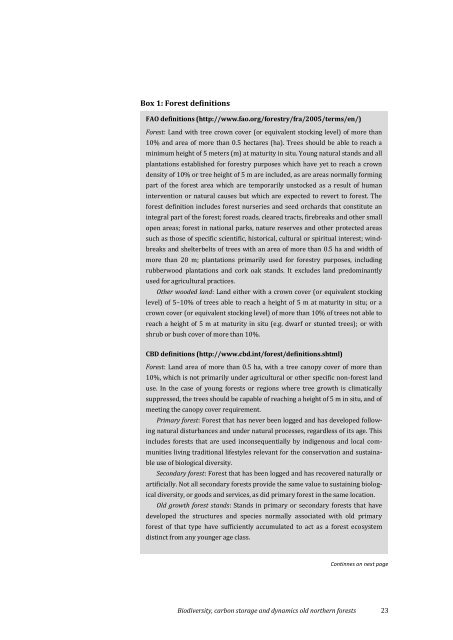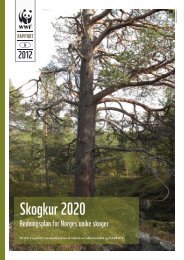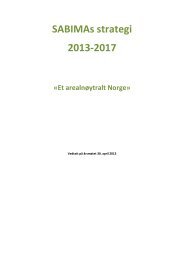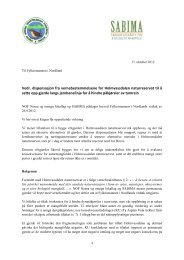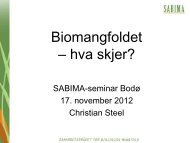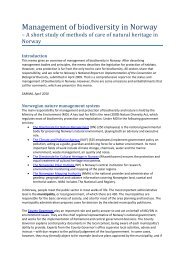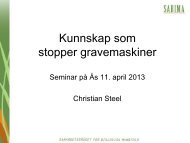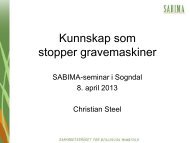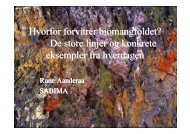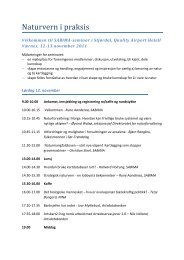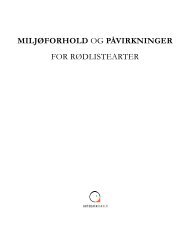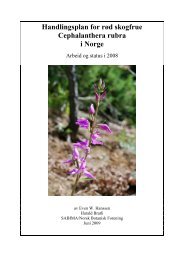Biodiversity, carbon storage and dynamics of old northern ... - BPAN.fi
Biodiversity, carbon storage and dynamics of old northern ... - BPAN.fi
Biodiversity, carbon storage and dynamics of old northern ... - BPAN.fi
You also want an ePaper? Increase the reach of your titles
YUMPU automatically turns print PDFs into web optimized ePapers that Google loves.
Box 1: Forest de<strong>fi</strong>nitions<br />
FAO de<strong>fi</strong>nitions (http://www.fao.org/forestry/fra/2005/terms/en/)<br />
Forest: L<strong>and</strong> with tree crown cover (or equivalent stocking level) <strong>of</strong> more than<br />
10% <strong>and</strong> area <strong>of</strong> more than 0.5 hectares (ha). Trees should be able to reach a<br />
minimum height <strong>of</strong> 5 meters (m) at maturity in situ. Young natural st<strong>and</strong>s <strong>and</strong> all<br />
plantations established for forestry purposes which have yet to reach a crown<br />
density <strong>of</strong> 10% or tree height <strong>of</strong> 5 m are included, as are areas normally forming<br />
part <strong>of</strong> the forest area which are temporarily unstocked as a result <strong>of</strong> human<br />
intervention or natural causes but which are expected to revert to forest. The<br />
forest de<strong>fi</strong>nition includes forest nurseries <strong>and</strong> seed orchards that constitute an<br />
integral part <strong>of</strong> the forest; forest roads, cleared tracts, <strong>fi</strong>rebreaks <strong>and</strong> other small<br />
open areas; forest in national parks, nature reserves <strong>and</strong> other protected areas<br />
such as those <strong>of</strong> speci<strong>fi</strong>c scienti<strong>fi</strong>c, historical, cultural or spiritual interest; windbreaks<br />
<strong>and</strong> shelterbelts <strong>of</strong> trees with an area <strong>of</strong> more than 0.5 ha <strong>and</strong> width <strong>of</strong><br />
more than 20 m; plantations primarily used for forestry purposes, including<br />
rubberwood plantations <strong>and</strong> cork oak st<strong>and</strong>s. It excludes l<strong>and</strong> predominantly<br />
used for agricultural practices.<br />
Other wooded l<strong>and</strong>: L<strong>and</strong> either with a crown cover (or equivalent stocking<br />
level) <strong>of</strong> 5–10% <strong>of</strong> trees able to reach a height <strong>of</strong> 5 m at maturity in situ; or a<br />
crown cover (or equivalent stocking level) <strong>of</strong> more than 10% <strong>of</strong> trees not able to<br />
reach a height <strong>of</strong> 5 m at maturity in situ (e.g. dwarf or stunted trees); or with<br />
shrub or bush cover <strong>of</strong> more than 10%.<br />
CBD de<strong>fi</strong>nitions (http://www.cbd.int/forest/de<strong>fi</strong>nitions.shtml)<br />
Forest: L<strong>and</strong> area <strong>of</strong> more than 0.5 ha, with a tree canopy cover <strong>of</strong> more than<br />
10%, which is not primarily under agricultural or other speci<strong>fi</strong>c non-forest l<strong>and</strong><br />
use. In the case <strong>of</strong> young forests or regions where tree growth is climatically<br />
suppressed, the trees should be capable <strong>of</strong> reaching a height <strong>of</strong> 5 m in situ, <strong>and</strong> <strong>of</strong><br />
meeting the canopy cover requirement.<br />
Primary forest: Forest that has never been logged <strong>and</strong> has developed following<br />
natural disturbances <strong>and</strong> under natural processes, regardless <strong>of</strong> its age. This<br />
includes forests that are used inconsequentially by indigenous <strong>and</strong> local communities<br />
living traditional lifestyles relevant for the conservation <strong>and</strong> sustainable<br />
use <strong>of</strong> biological diversity.<br />
Secondary forest: Forest that has been logged <strong>and</strong> has recovered naturally or<br />
arti<strong>fi</strong>cially. Not all secondary forests provide the same value to sustaining biological<br />
diversity, or goods <strong>and</strong> services, as did primary forest in the same location.<br />
Old growth forest st<strong>and</strong>s: St<strong>and</strong>s in primary or secondary forests that have<br />
developed the structures <strong>and</strong> species normally associated with <strong>old</strong> primary<br />
forest <strong>of</strong> that type have suf<strong>fi</strong>ciently accumulated to act as a forest ecosystem<br />
distinct from any younger age class.<br />
UN Framework Convention on Climate Change<br />
(http://unfccc.int/resource/docs/2005/cmp1/eng/08a03.pdf#page=3)<br />
Continnes on next page<br />
Forest: a minimum area <strong>of</strong> l<strong>and</strong> <strong>of</strong> 0.05–1.0 ha with tree crown cover (or equivalent<br />
stocking level) <strong>of</strong> more than 10–30% with trees with the potential to reach a<br />
minimum height <strong>of</strong> 2–5 m at maturity in situ. A forest may consist either <strong>of</strong><br />
closed forest <strong>Biodiversity</strong>, formations <strong>carbon</strong> where <strong>storage</strong> trees <strong>of</strong> <strong>and</strong> various <strong>dynamics</strong> storeys <strong>old</strong> <strong>and</strong> <strong>northern</strong> undergrowth forests cover a 23<br />
high proportion <strong>of</strong> the ground or open forest. Young natural st<strong>and</strong>s <strong>and</strong> all plantations<br />
which have yet to reach a crown density <strong>of</strong> 10–30% or tree height <strong>of</strong> 2–5


